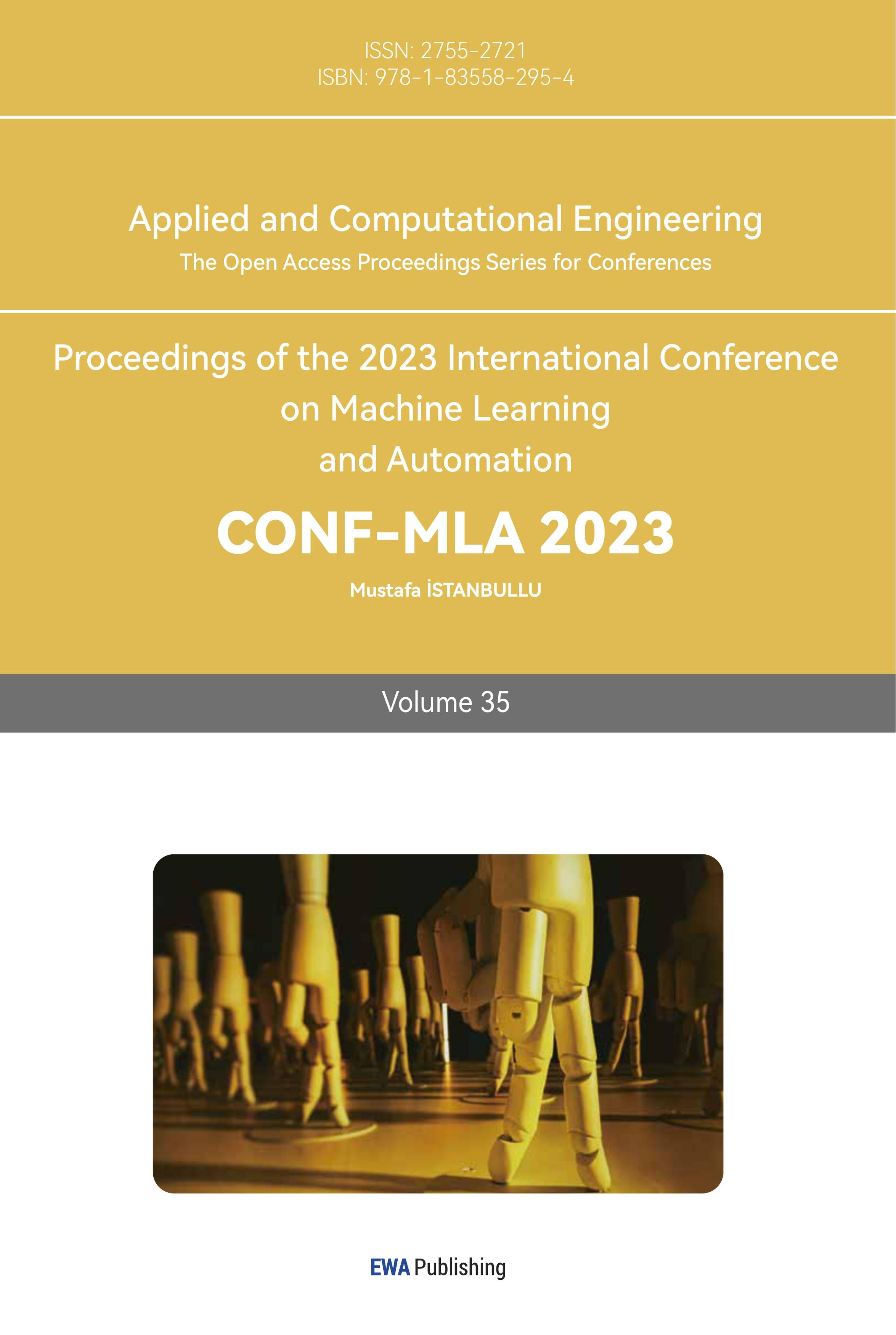References
[1]. American Brain Tumor Association (n.d.) About Brain Tumors Availabe at: https://www.abta.org/about-brain-tumors/ (Accessed: 12 August 2023)
[2]. National Brain Tumor Society 2023 Brain tumor facts Available at: https://braintumor.org/brain-tumors/about-brain-tumors/brain-tumor-facts/#:~:text=35.7%25%20Relative%20Survival%20Rate%20for%20all%20patients%20with,die%20from%20a%20malignant%20brain%20tumor%20in%202023 (Accessed: 12 August 2023)
[3]. Lupton A Abu-Suwa H Bolton G C and Golden C 2020 The implications of brain tumors on aggressive behavior and suicidality: a review Aggression and violent behavior 54 p 101416
[4]. Qiu Y Chang C S Yan J L et al 2019 Semantic segmentation of intracranial hemorrhages in head CT scans 2019 IEEE 10th International Conference on Software Engineering and Service Science (ICSESS) IEEE 112-115
[5]. Ayadi W Elhamzi W Charfi I et al 2021 Deep CNN for brain tumor classification Neural processing letters 53: 671-700
[6]. Gull S and Akbar S 2021 Artificial intelligence in brain tumor detection through MRI Scans Artif Intelligence Internet Things pp 241-276
[7]. Dahhaghchi I Christie R D Rosenwald G W and Liu C C 1997 AI application areas in power systems IEEE expert 12(1) pp 58-66
[8]. Ahmad T Zhu H Zhang D Tariq R Bassam A Ullah F AlGhamdi A S and Alshamrani S S 2022 Energetics Systems and artificial intelligence: Applications of industry 4.0 Energy Reports 8 pp 334-361
[9]. Yan Z Liu W Wen S and Yang Y 2019 Multi-label image classification by feature attention network Ieee Access 7 pp 98005-98013
[10]. Albahri O S et al 2020 Systematic review of artificial intelligence techniques in the detection and classification of COVID-19 medical images in terms of evaluation and benchmarking: Taxonomy analysis, challenges, future solutions and methodological aspects Journal of infection and public health 13(10) pp 1381-1396
[11]. Hekler A et al 2019 Superior skin cancer classification by the combination of human and artificial intelligence European Journal of Cancer 120 pp 114-121
[12]. Géron A 2022 Hands-on machine learning with Scikit-Learn, Keras, and TensorFlow O'Reilly Media, Inc. chapter 2 pp 66-91
Cite this article
Ho,S. (2024). Automated machine learning-based neural network for brain tumor classification. Applied and Computational Engineering,35,245-252.
Data availability
The datasets used and/or analyzed during the current study will be available from the authors upon reasonable request.
Disclaimer/Publisher's Note
The statements, opinions and data contained in all publications are solely those of the individual author(s) and contributor(s) and not of EWA Publishing and/or the editor(s). EWA Publishing and/or the editor(s) disclaim responsibility for any injury to people or property resulting from any ideas, methods, instructions or products referred to in the content.
About volume
Volume title: Proceedings of the 2023 International Conference on Machine Learning and Automation
© 2024 by the author(s). Licensee EWA Publishing, Oxford, UK. This article is an open access article distributed under the terms and
conditions of the Creative Commons Attribution (CC BY) license. Authors who
publish this series agree to the following terms:
1. Authors retain copyright and grant the series right of first publication with the work simultaneously licensed under a Creative Commons
Attribution License that allows others to share the work with an acknowledgment of the work's authorship and initial publication in this
series.
2. Authors are able to enter into separate, additional contractual arrangements for the non-exclusive distribution of the series's published
version of the work (e.g., post it to an institutional repository or publish it in a book), with an acknowledgment of its initial
publication in this series.
3. Authors are permitted and encouraged to post their work online (e.g., in institutional repositories or on their website) prior to and
during the submission process, as it can lead to productive exchanges, as well as earlier and greater citation of published work (See
Open access policy for details).
References
[1]. American Brain Tumor Association (n.d.) About Brain Tumors Availabe at: https://www.abta.org/about-brain-tumors/ (Accessed: 12 August 2023)
[2]. National Brain Tumor Society 2023 Brain tumor facts Available at: https://braintumor.org/brain-tumors/about-brain-tumors/brain-tumor-facts/#:~:text=35.7%25%20Relative%20Survival%20Rate%20for%20all%20patients%20with,die%20from%20a%20malignant%20brain%20tumor%20in%202023 (Accessed: 12 August 2023)
[3]. Lupton A Abu-Suwa H Bolton G C and Golden C 2020 The implications of brain tumors on aggressive behavior and suicidality: a review Aggression and violent behavior 54 p 101416
[4]. Qiu Y Chang C S Yan J L et al 2019 Semantic segmentation of intracranial hemorrhages in head CT scans 2019 IEEE 10th International Conference on Software Engineering and Service Science (ICSESS) IEEE 112-115
[5]. Ayadi W Elhamzi W Charfi I et al 2021 Deep CNN for brain tumor classification Neural processing letters 53: 671-700
[6]. Gull S and Akbar S 2021 Artificial intelligence in brain tumor detection through MRI Scans Artif Intelligence Internet Things pp 241-276
[7]. Dahhaghchi I Christie R D Rosenwald G W and Liu C C 1997 AI application areas in power systems IEEE expert 12(1) pp 58-66
[8]. Ahmad T Zhu H Zhang D Tariq R Bassam A Ullah F AlGhamdi A S and Alshamrani S S 2022 Energetics Systems and artificial intelligence: Applications of industry 4.0 Energy Reports 8 pp 334-361
[9]. Yan Z Liu W Wen S and Yang Y 2019 Multi-label image classification by feature attention network Ieee Access 7 pp 98005-98013
[10]. Albahri O S et al 2020 Systematic review of artificial intelligence techniques in the detection and classification of COVID-19 medical images in terms of evaluation and benchmarking: Taxonomy analysis, challenges, future solutions and methodological aspects Journal of infection and public health 13(10) pp 1381-1396
[11]. Hekler A et al 2019 Superior skin cancer classification by the combination of human and artificial intelligence European Journal of Cancer 120 pp 114-121
[12]. Géron A 2022 Hands-on machine learning with Scikit-Learn, Keras, and TensorFlow O'Reilly Media, Inc. chapter 2 pp 66-91









